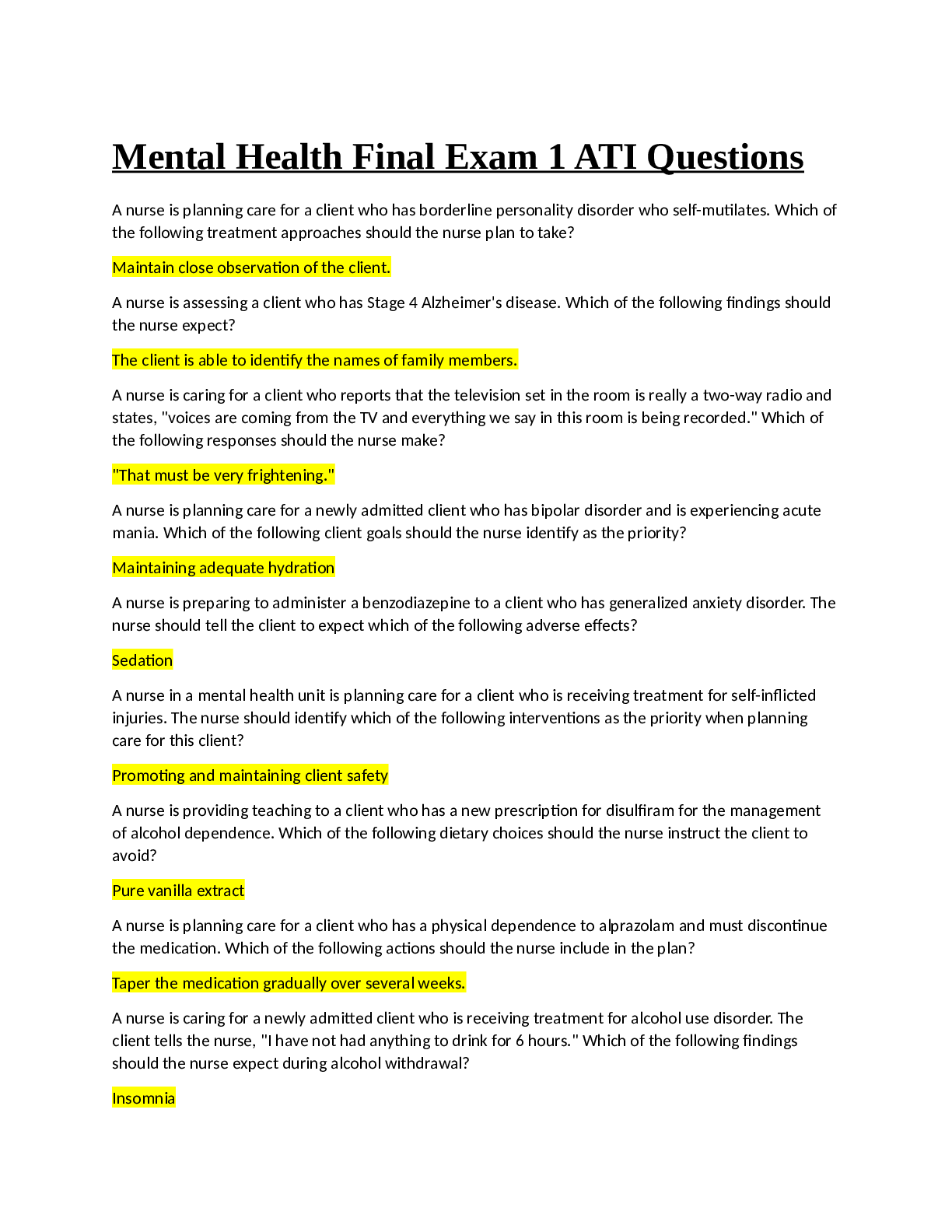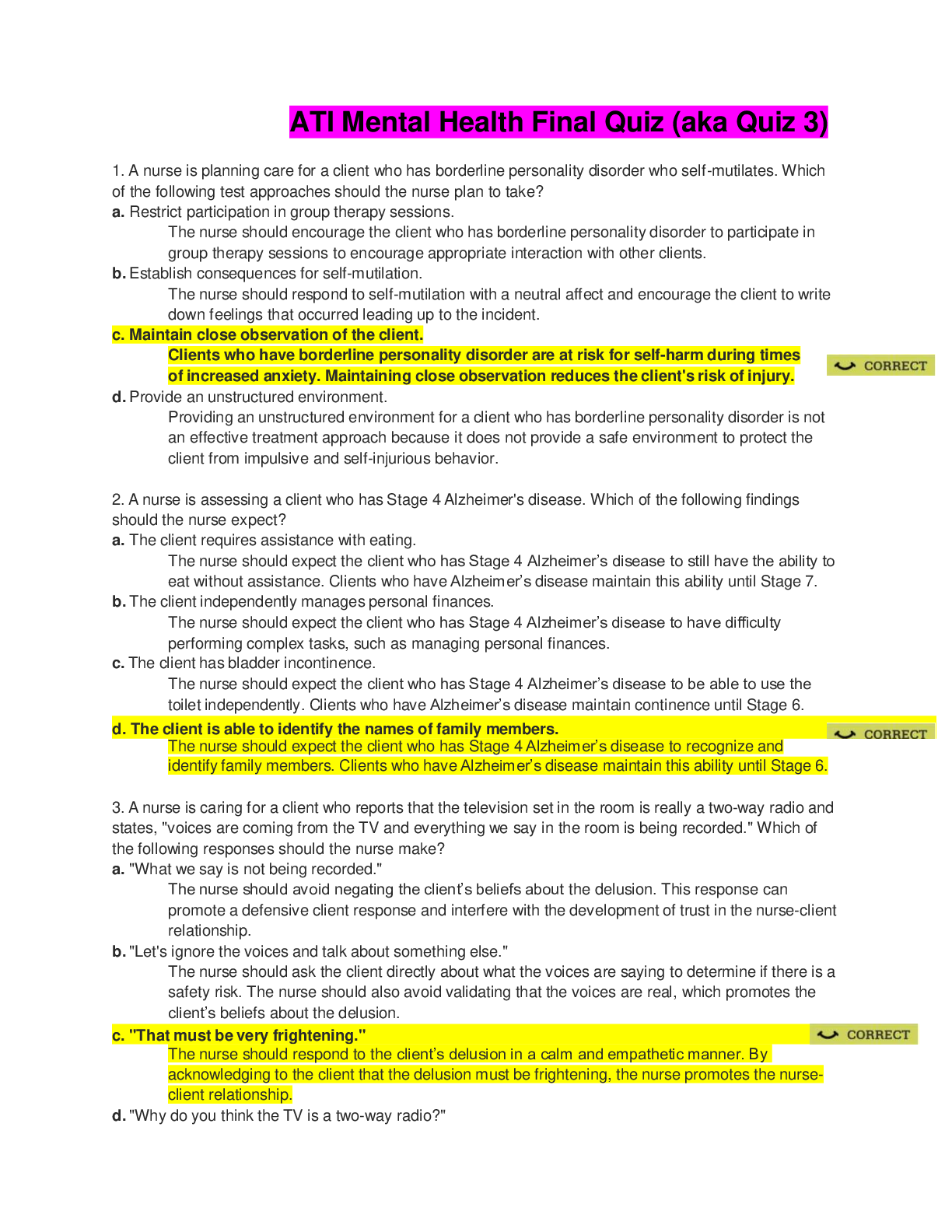*NURSING > QUESTIONS and ANSWERS > ATI Mental Health Final Quiz (aka Quiz 3) With Answers & Explanations. Get an A+ (All)
ATI Mental Health Final Quiz (aka Quiz 3) With Answers & Explanations. Get an A+
Document Content and Description Below
ATI Mental Health Final Quiz (aka Quiz 3) 1. A nurse is planning care for a client who has borderline personality disorder who self-mutilates. Which of the following test approaches should the nurse... plan to take? a. Restrict participation in group therapy sessions. The nurse should encourage the client who has borderline personality disorder to participate in group therapy sessions to encourage appropriate interaction with other clients. b. Establish consequences for self-mutilation. The nurse should respond to self-mutilation with a neutral affect and encourage the client to write down feelings that occurred leading up to the incident. c. Maintain close observation of the client. Clients who have borderline personality disorder are at risk for self-harm during times of increased anxiety. Maintaining close observation reduces the client's risk of injury. d. Provide an unstructured environment. Providing an unstructured environment for a client who has borderline personality disorder is not an effective treatment approach because it does not provide a safe environment to protect the client from impulsive and self-injurious behavior. 2. A nurse is assessing a client who has Stage 4 Alzheimer's disease. Which of the following findings should the nurse expect? a. The client requires assistance with eating. The nurse should expect the client who has Stage 4 Alzheimer’s disease to still have the ability to eat without assistance. Clients who have Alzheimer’s disease maintain this ability until Stage 7. b. The client independently manages personal finances. The nurse should expect the client who has Stage 4 Alzheimer’s disease to have difficulty performing complex tasks, such as managing personal finances. c. The client has bladder incontinence. The nurse should expect the client who has Stage 4 Alzheimer’s disease to be able to use the toilet independently. Clients who have Alzheimer’s disease maintain continence until Stage 6. d. The client is able to identify the names of family members. The nurse should expect the client who has Stage 4 Alzheimer’s disease to recognize and identify family members. Clients who have Alzheimer’s disease maintain this ability until Stage 6. 3. A nurse is caring for a client who reports that the television set in the room is really a two-way radio and states, "voices are coming from the TV and everything we say in the room is being recorded." Which of the following responses should the nurse make? a. "What we say is not being recorded." The nurse should avoid negating the client’s beliefs about the delusion. This response can promote a defensive client response and interfere with the development of trust in the nurse-client relationship. b. "Let's ignore the voices and talk about something else." The nurse should ask the client directly about what the voices are saying to determine if there is a safety risk. The nurse should also avoid validating that the voices are real, which promotes the client’s beliefs about the delusion. c. "That must be very frightening." The nurse should respond to the client’s delusion in a calm and empathetic manner. By acknowledging to the client that the delusion must be frightening, the nurse promotes the nurseclient relationship. d. "Why do you think the TV is a two-way radio?" The nurse should avoid asking the client a "why" question, which promotes a defensive client response. 4. A nurse is planning care for a newly admitted client who has bipolar disorder and is experiencing acute mania. Which of the following client goals should the nurse identify as the priority? a. Practicing problem-solving skills The nurse should encourage the client to practice problem-solving skills during the continuation phase of treatment; however, there is another intervention that is the priority during the acute phase of bipolar disorder. b. Understanding of medication regimen The nurse should ensure that the client understands the medication regimen during the continuation phase of treatment; however, there is another intervention that is the priority during the acute phase of bipolar disorder. c. Identifying indications of relapse The nurse should teach the client to recognize indications of relapse during the continuation phase of treatment; however, there is another intervention that is the priority during the acute phase of bipolar disorder. d. Maintaining adequate hydration The nurse should identify that the priority goal is to prevent physical exhaustion, maintain health, and meet nutritional and rest needs during the acute phase of the client’s manic episode. The nurse should consider Maslow’s hierarchy of needs, which includes five levels of priority when planning care for this client. The first level consists of physiological needs; the second level consists of safety and security needs; the third level consists of love and belonging needs; the fourth level consists of personal achievement and self-esteem needs; and the fifth level consists of achieving full potential and the ability to problem solve and cope with life situations. When applying Maslow’s hierarchy of needs priority-setting framework the nurse should review physiological needs first. The nurse should then address the client’s needs by following the remaining four hierarchical levels. It is important, however, for the nurse to consider all contributing client factors, as higher levels of the pyramid can compete with those at the lower levels, depending on the specific client situation. The fourth level of Maslow’s hierarchy of needs includes usefulness, self-worth, and self-confidence in fulfilling self-esteem needs. 5. A nurse is preparing to administer benzodiazepine to a client with Generalized Anxiety Disorder. The nurse should tell the client to expect with of the following adverse reactions? a. Tinnitus Tinnitus is not an adverse effect of benzodiazepines. b. Bradycardia Tachycardia, rather than bradycardia, is a potential adverse effect of benzodiazepines. c. Halitosis Halitosis is not an adverse effect of benzodiazepines. d. Sedation The nurse should tell the client to expect sedation as an adverse effect of benzodiazepines because of the CNS depression effects. 6. A nurse in a mental health unit is planning care for a client who is receiving treatment for self-inflicted injuries. The nurse should identify which of the following interventions as the priority when planning care for this client? a. Promoting and maintaining client safety The nurse should recognize that the client who has self-inflicted injuries is at risk for further self-harm or suicide; therefore, the client’s safety is the priority. The nurse should apply the safety and risk reduction priority-setting framework when planning care for this client. This framework assigns priority to the factor or situation posing the greatest safety risk to the client. When there are several risks to client safety, the one posing the greatest threat is the highest priority. The nurse should use Maslow’s hierarchy of needs, the ABC priority-setting framework, or nursing knowledge to identify which risk poses the greatest threat to the client. b. Discussing reasons for the client's behavior The nurse should communicate with the client to discuss reasons for the client’s behavior; however, there is another action that is the priority. c. Assisting the client to recognize feelings The nurse should assist the client to recognize feelings; however, there is another action that is the priority. d. Teaching the client alternative coping strategies The nurse should teach the client alternative coping strategies; however, there is another action that is the priority. 7. A nurse is providing teaching to a client who has a new prescription for disulfiram for management of alcohol dependence. Which of the following dietary choices should the nurse instruct the client to avoid? a. Peppermint candy It is not necessary for the client to avoid peppermint while taking disulfiram. b. Pure vanilla extract The nurse should instruct the client to avoid alcohol and alcohol-containing substances, such as pure vanilla extract, while taking disulfiram. The ingestion of alcohol while taking this medication causes a disulfiram-alcohol reaction, which is manifested by hyperventilation, dizziness, vomiting, and hypotension. c. Salt Though certain medications require a reduction in sodium intake, it is not necessary for the client to avoid salt while taking disulfiram. d. Chocolate Though certain medications require a reduction in caffeine-containing substances such as chocolate, it is not necessary for the client to avoid chocolate while taking disulfiram. 8. A nurse is planning care for a client with a physical dependence of Alprazolam and must discontinue the medication. Which of the following should the nurse include in the plan? a. Taper the medication gradually over several weeks. The nurse should plan to taper the dosage of alprazolam gradually over several weeks, possibly months. This gradual reduction in dosage reduces the manifestations of withdrawal. b. Encourage participation in stimulating physical activity. The nurse should provide the client with a calm, low-stimulation environment to decrease the anxiety and physical manifestations that can result from alprazolam withdrawal. c. Monitor the client for a return of anxiety for up to 72 hr following discontinuation of the medication. The nurse should plan to monitor the client for at least 3 weeks following discontinuation of the medication for a return of anxiety manifestations. d. Implement restraints and seclusion as needed. It is not necessary to restrain or seclude the client during withdrawal from alprazolam. Restraints are considered restrictive, and the nurse should work to promote the least restrictive environment. [Show More]
Last updated: 1 year ago
Preview 1 out of 18 pages
Instant download
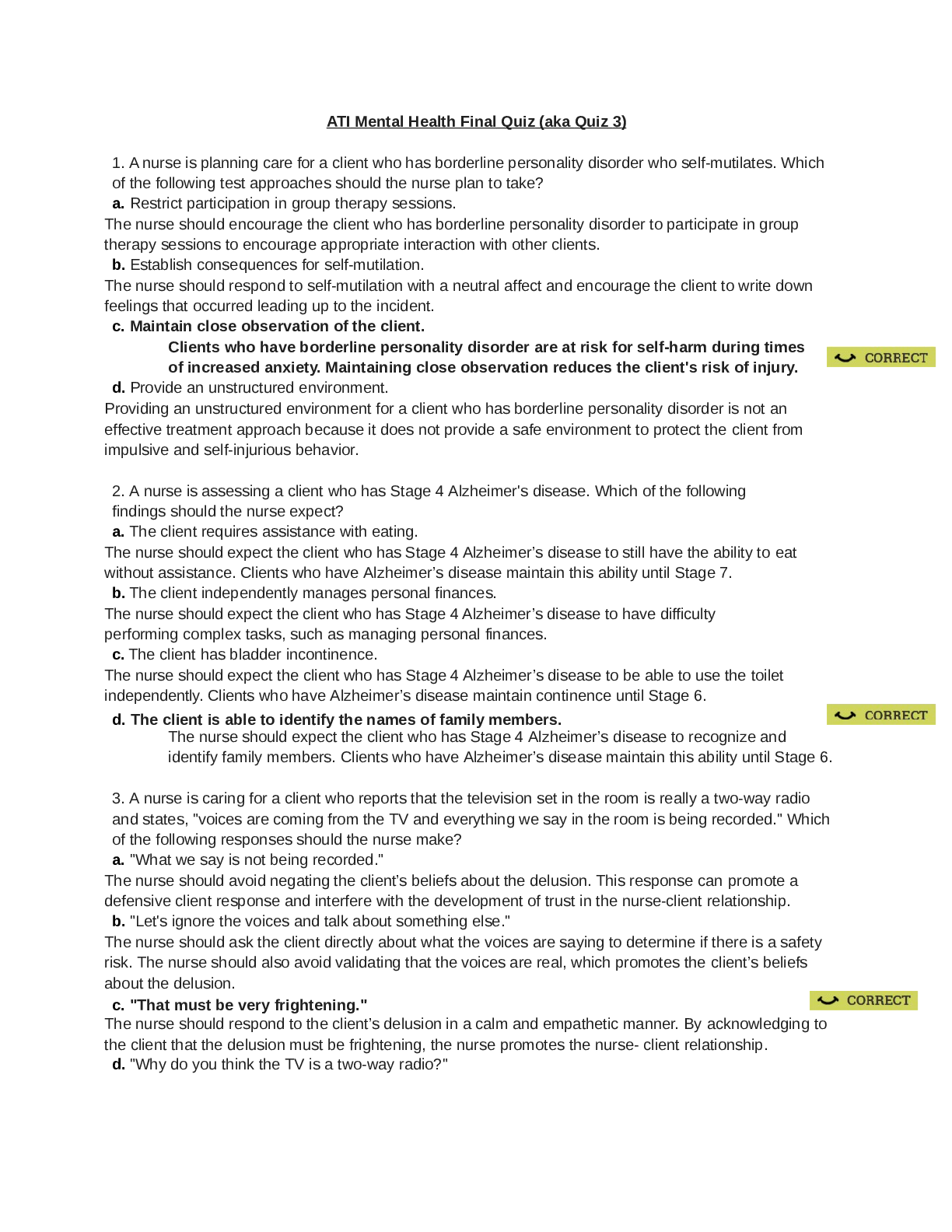
Buy this document to get the full access instantly
Instant Download Access after purchase
Add to cartInstant download
Reviews( 0 )
Document information
Connected school, study & course
About the document
Uploaded On
Apr 12, 2021
Number of pages
18
Written in
Additional information
This document has been written for:
Uploaded
Apr 12, 2021
Downloads
0
Views
50

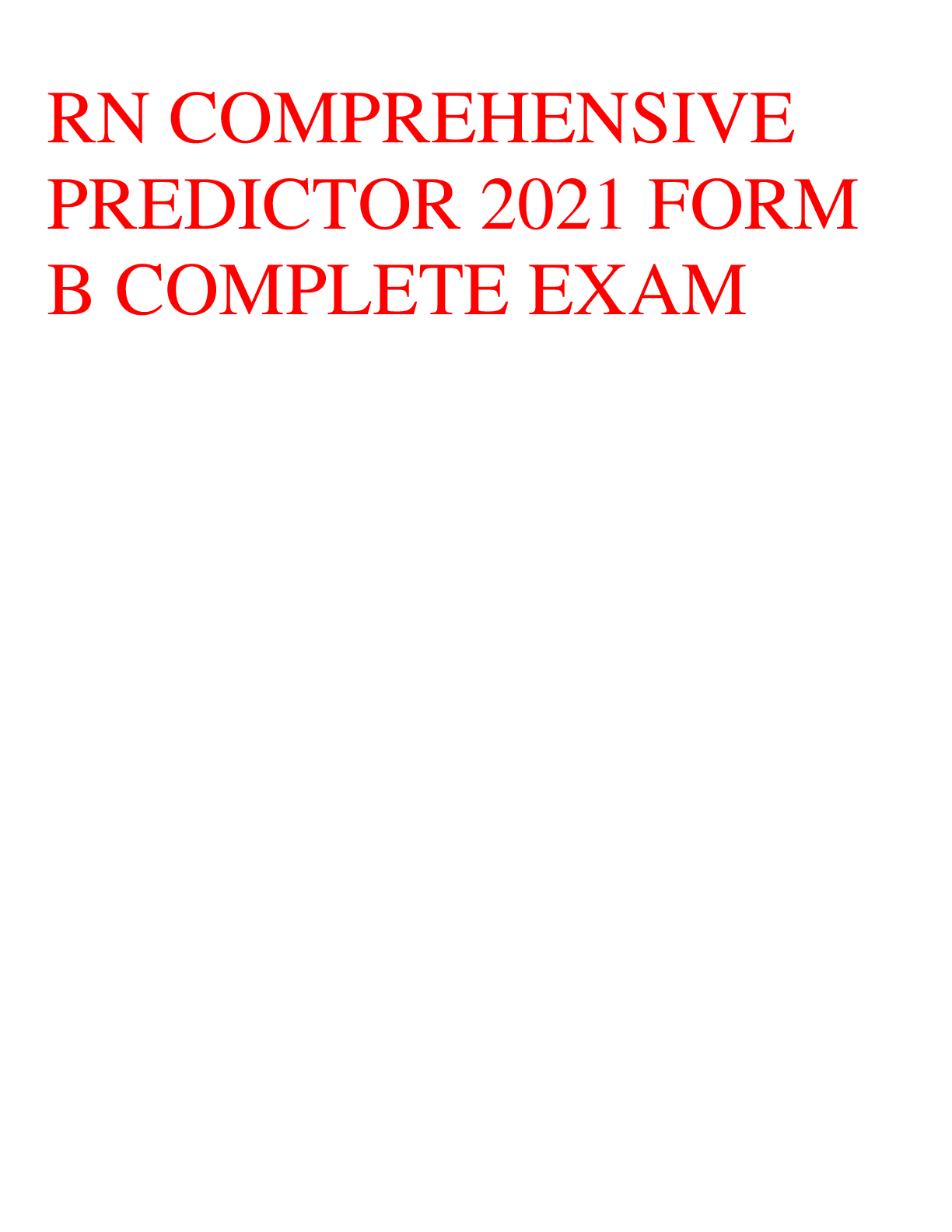
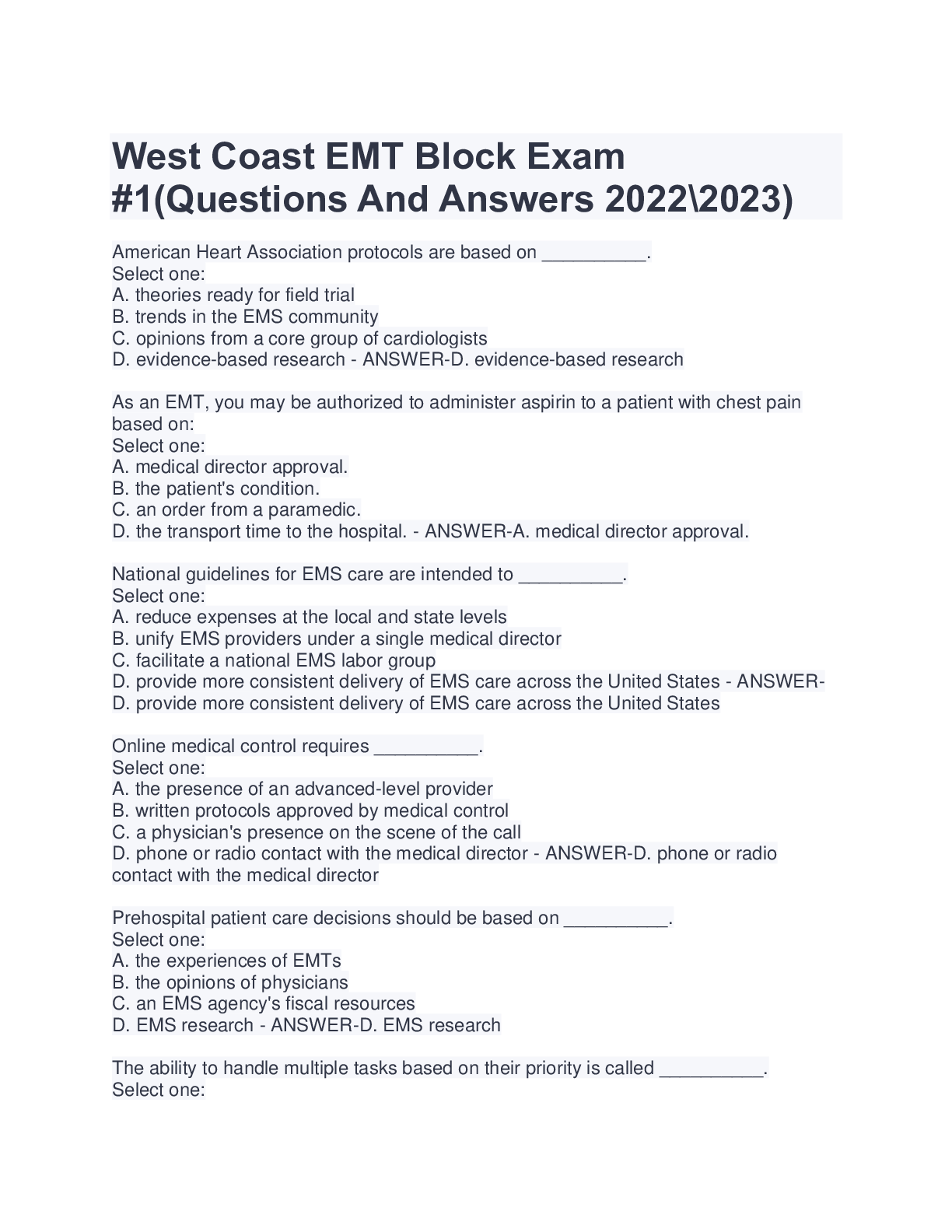
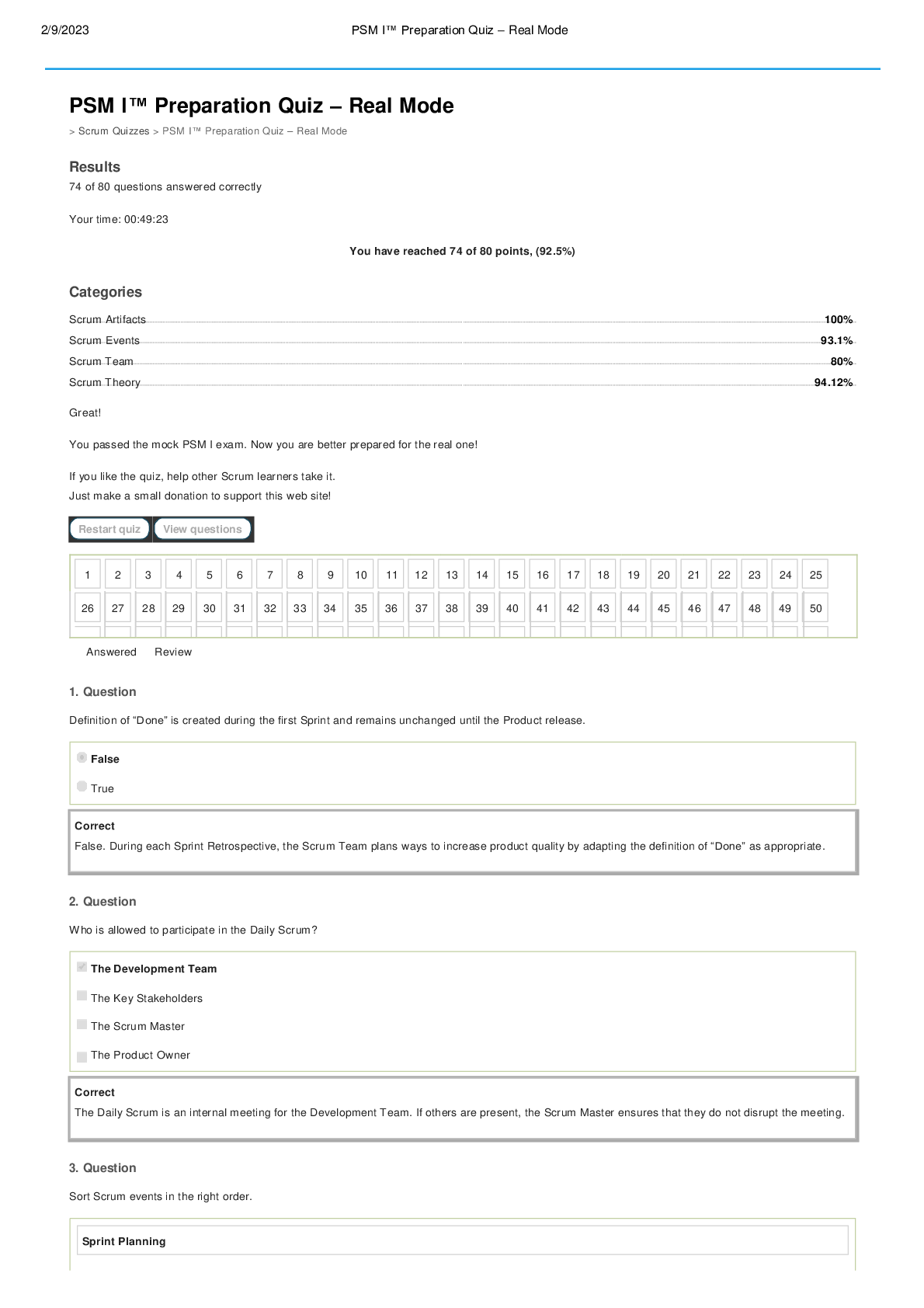
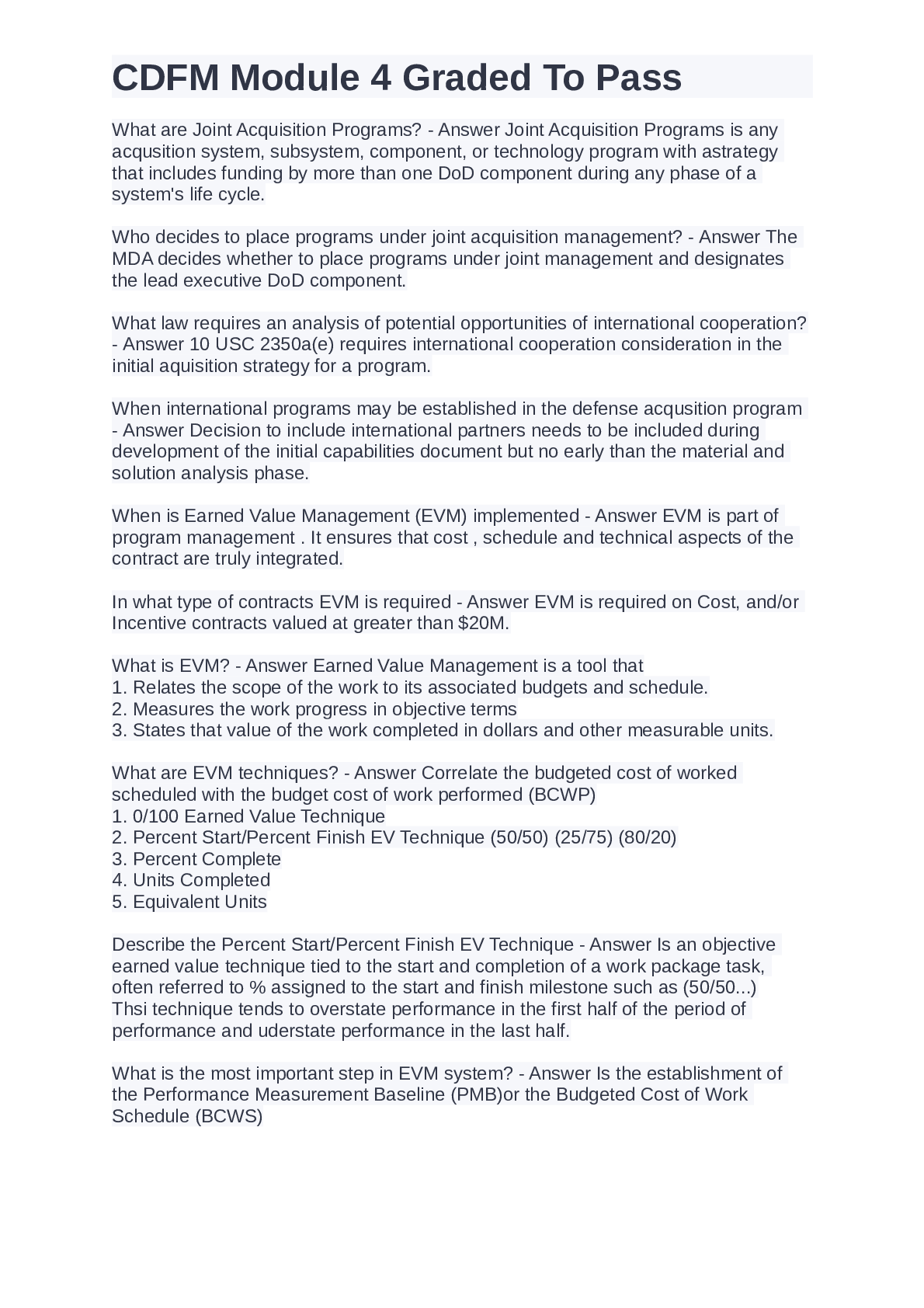
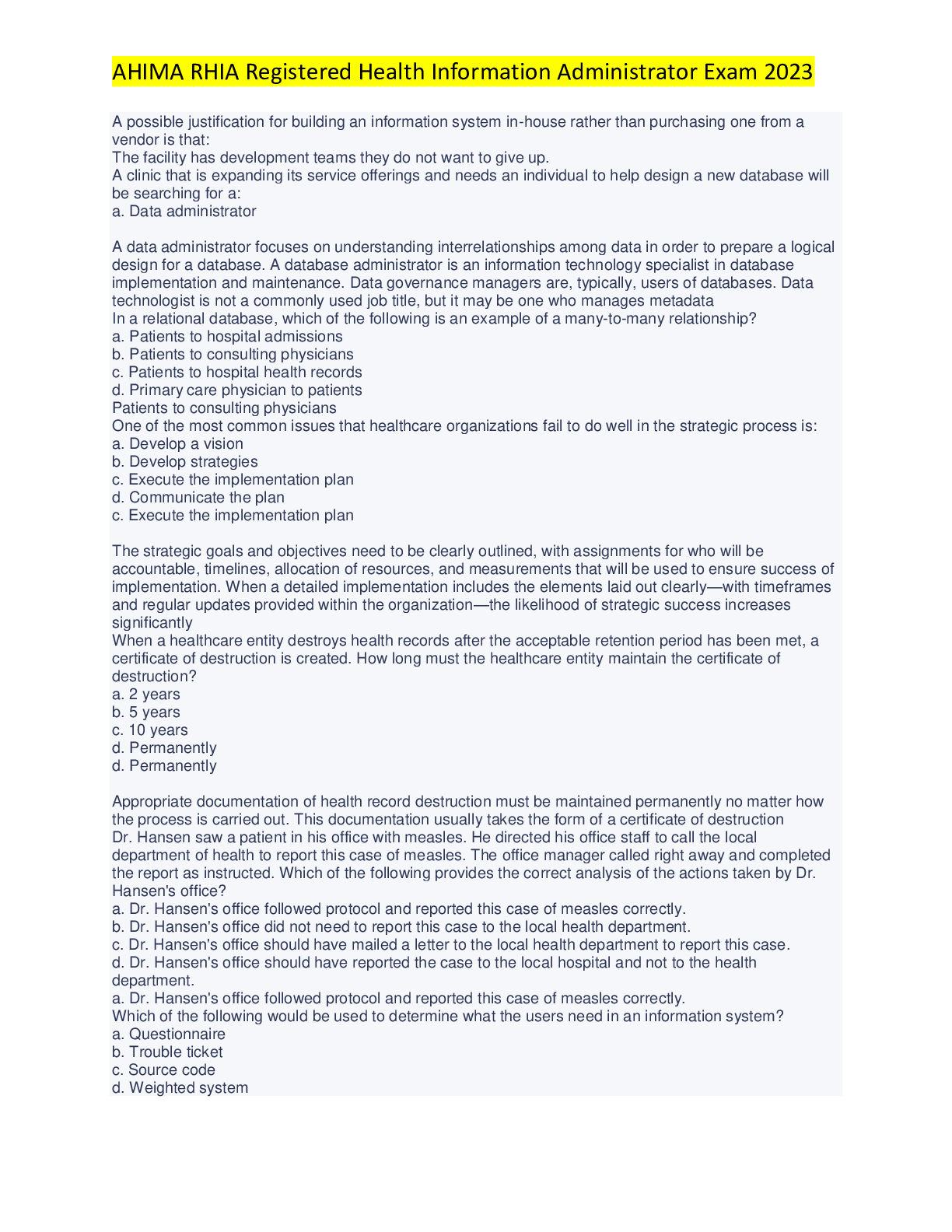
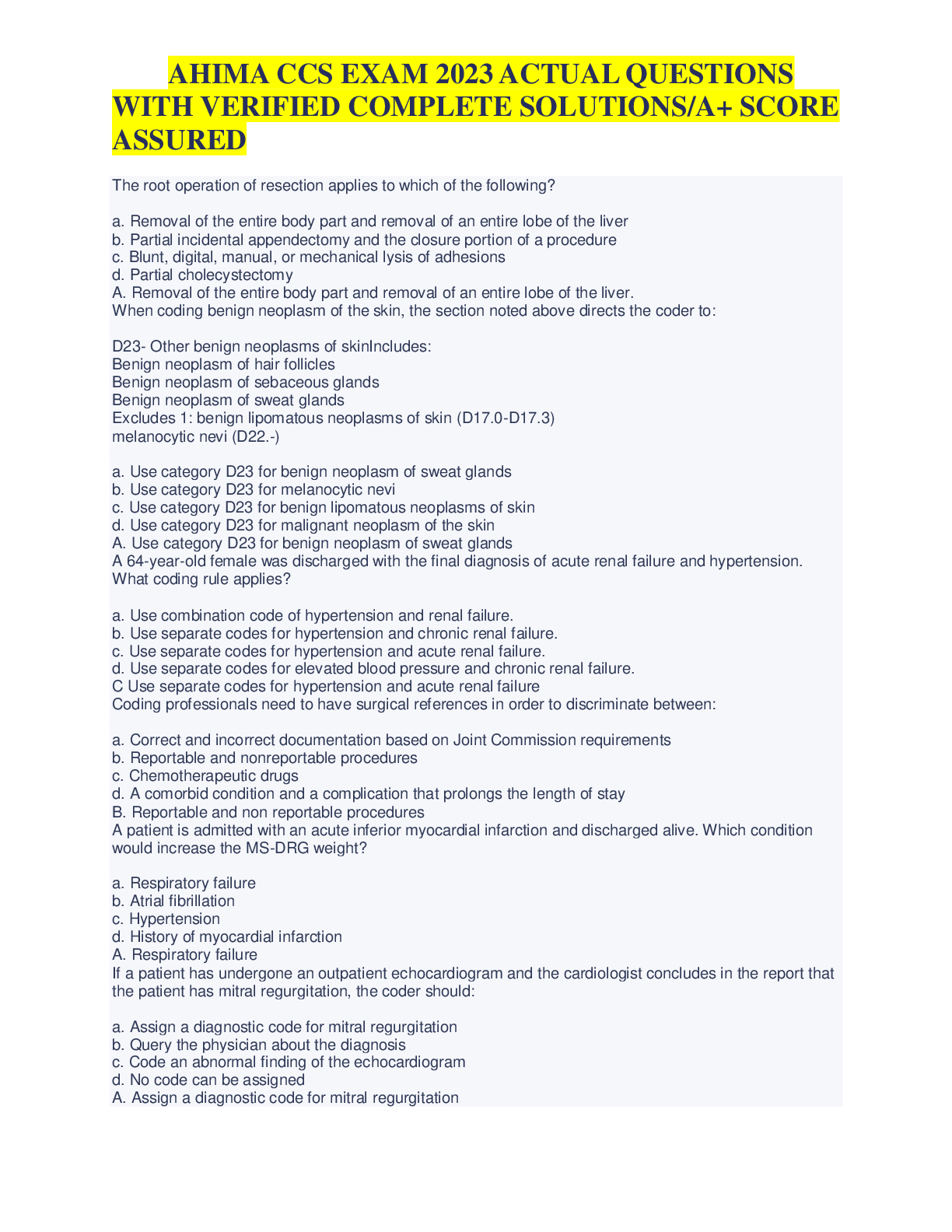
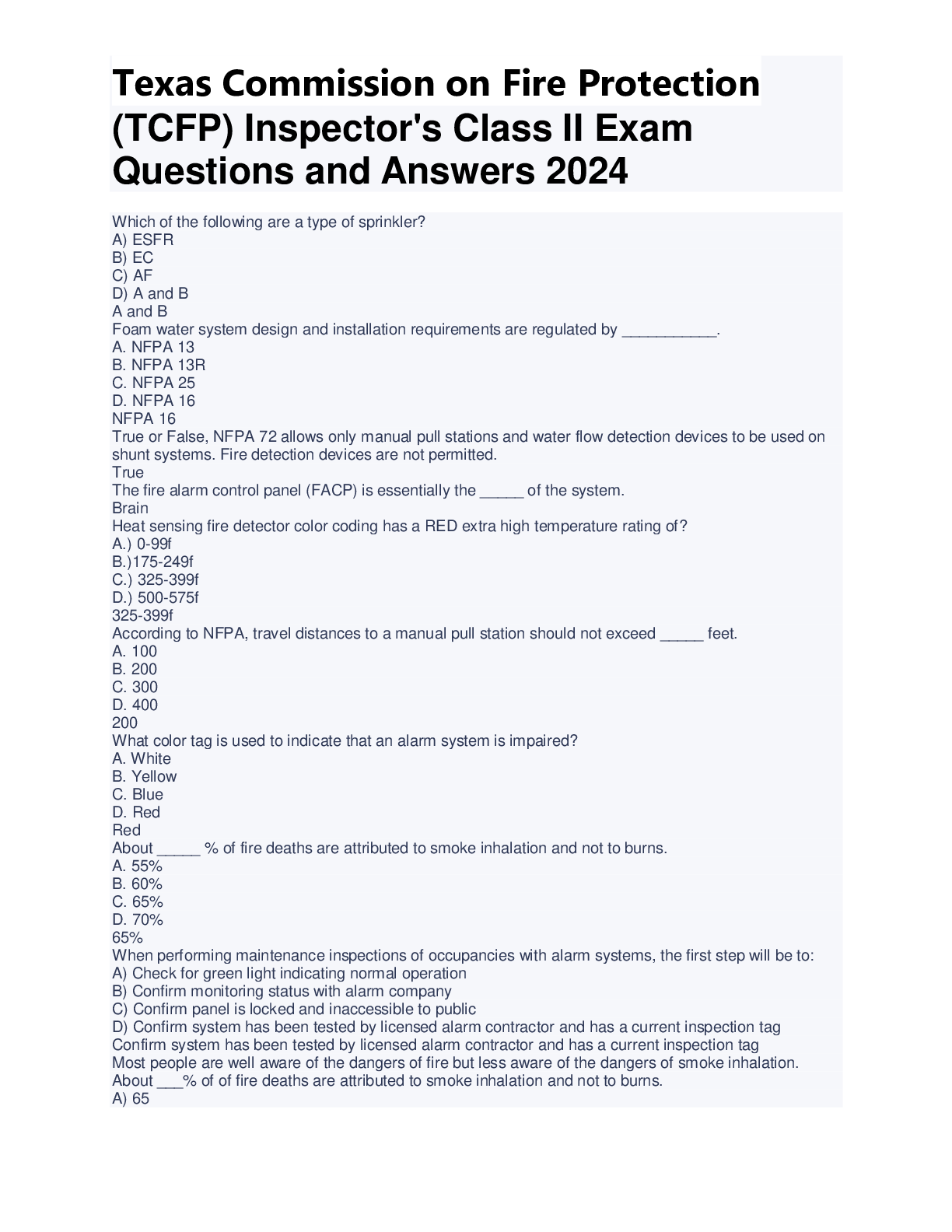
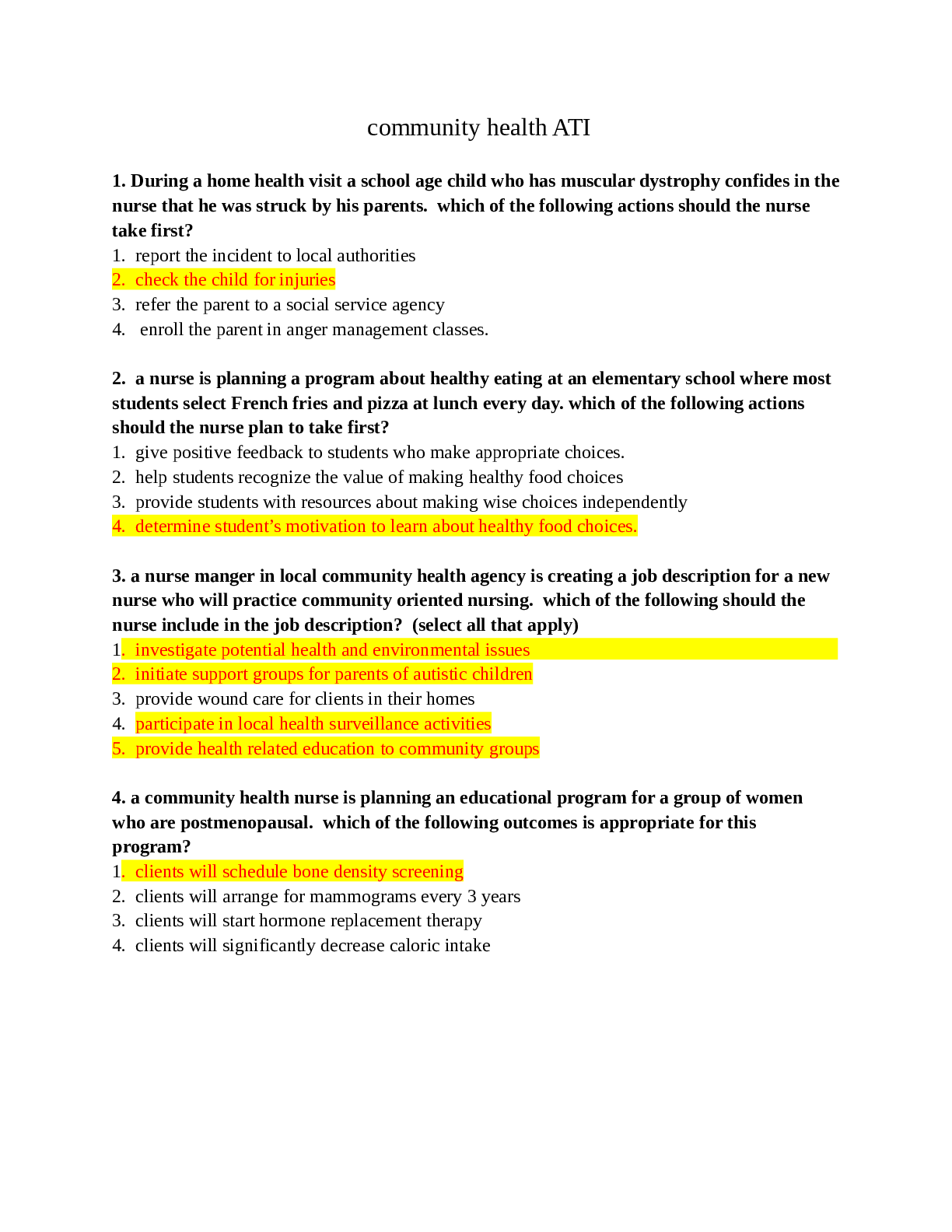




 – Chamberlain College of Nursing.png)

